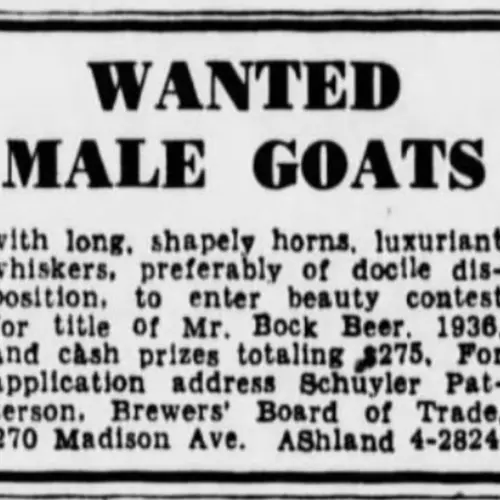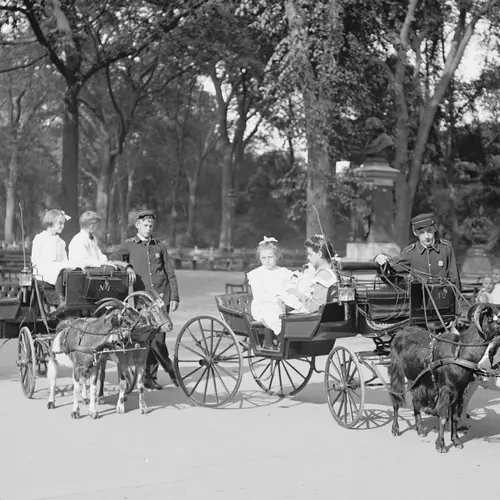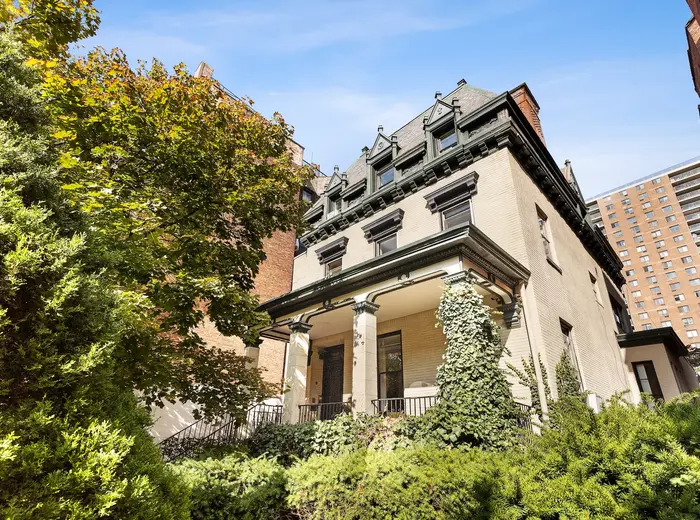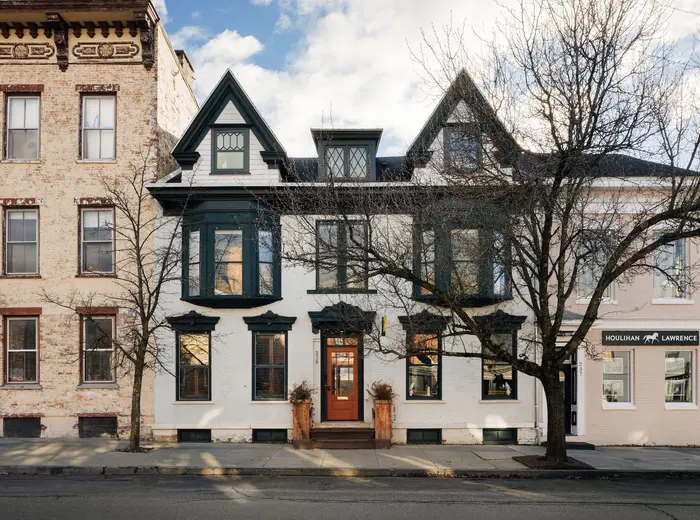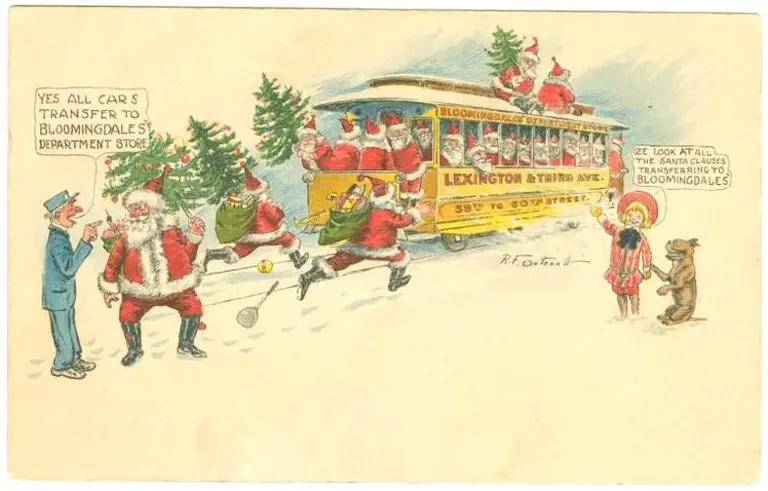Billy goats and beer: When Central Park held goat beauty pageants
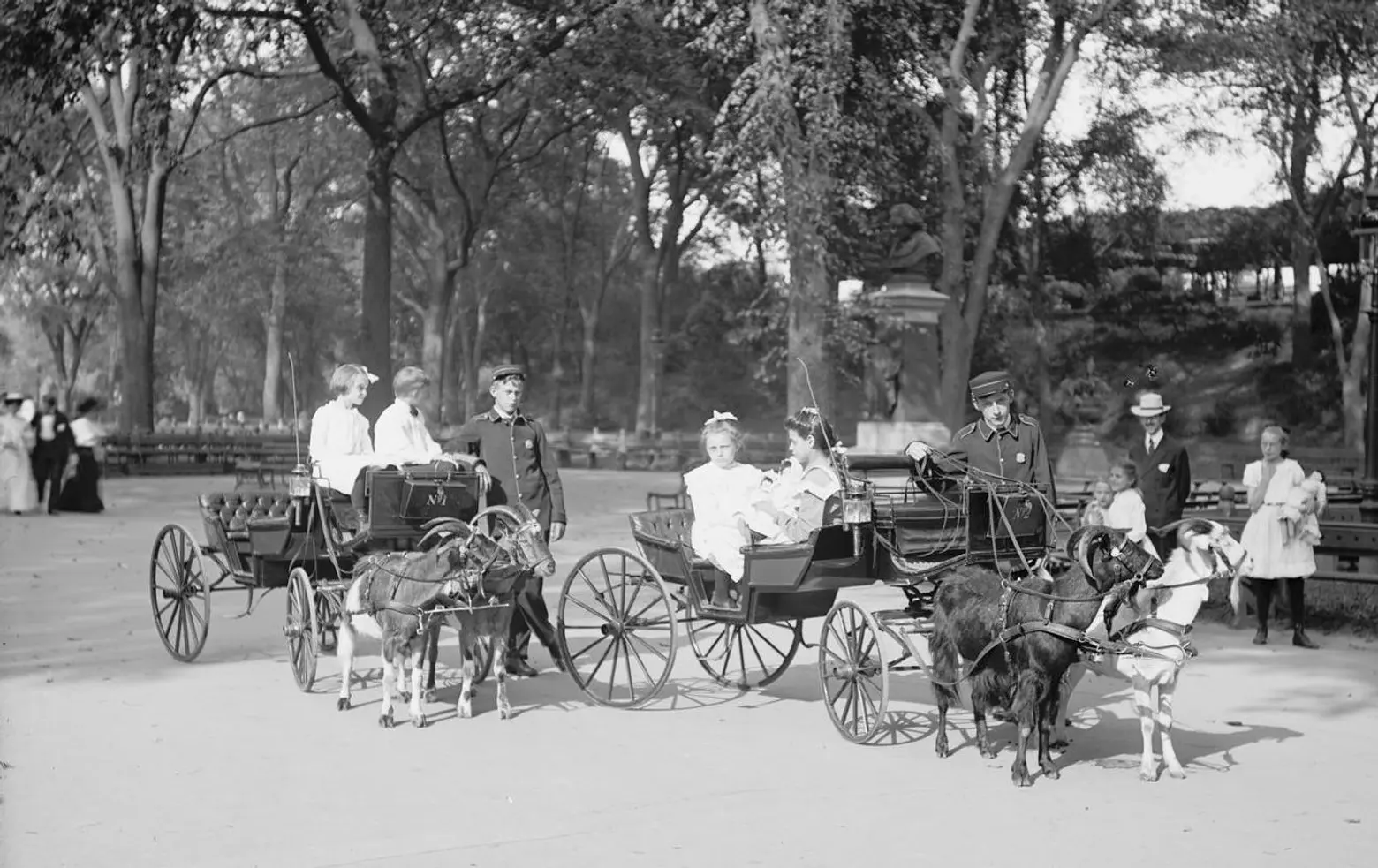
Goat carriages in Central Park via Library of Congress
1930s New York brought us many things: Superman, the Rockefeller Center Christmas Tree, Joe DiMaggio, and, of course, goat beauty pageants in Central Park. Following the repeal of Prohibition in 1933, the Brewer’s Board of Trade was eager to revive the springtime tradition of Bock Beer festivals and put out an appeal for the most gorgeous goats in Gotham. The goats would go horn to horn in beauty pageants in Central Park to claim the title of “Mr. Manhattan,” and the right to return to the park for regional competitions to determine which beautiful Billy Goat would be “Mr. Bock Beer,” the brewer’s mascot, and the face of ubiquitous bock beer advertisements.
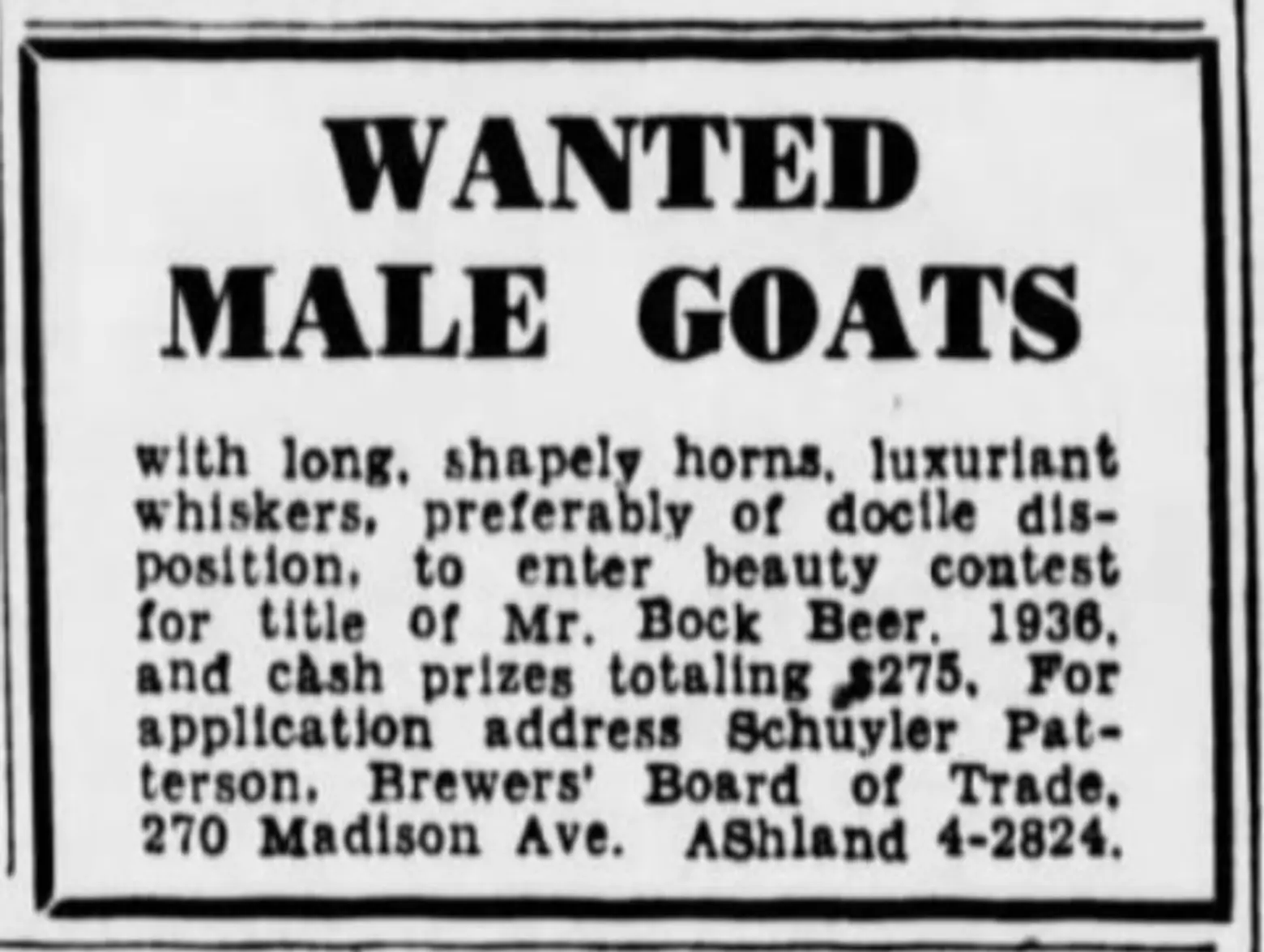
Desperately Seeking… Goats! This ad appeared in the Brooklyn Daily Eagle February 13th, 1936. Via Brooklyn Public Library
For the Brewers, largely of German heritage, Billy Goats were natural choices as the faces of their seasonal bock beer campaigns, since “billy goat” translates to “geissbock” in German.
For the New York Times, the pageants recalled not German folklore, but classical mythology: As the paper put it in 1934, “Amid the Virgilian landscapes of Central Park, the shy goatherds of Manhattan will bathe in the sweet light of publicity this morning, when they assemble at 11 o’clock to consecrate the choicest of their flocks to Bacchus.”
For the goats, competition was stiff. During the first contest, held March 17, 1934, more than 100 goats competed for the title of “Mr. Manhattan.” That number doesn’t include entrants in the contests for Mr. Bronx or Mr. Brooklyn.
The competing goats were tethered in an enclosure close to the Heckscher Playground, near Central Park West and 66th Street. Most of the goats stood merrily eating their name tags, bleating at the children playing close by. (The children, naturally, bleated right back.) But, one goat, by the name of Hiram Abiff, had a more aggressive agenda in mind. The Times reported, “Hiram Abiff…scorning to play politics, tackled low and hard whenever a judge or anyone else approached him.” In at least one case, “Hiram Abiff scored a definite take-out.”
For his natural skill as a defensive lineman, Hiram Abiff emerged as a crowd favorite, but when the dust settled, a gentler goat named Pretzels emerged as “Mr. Manhattan.” Pretzels took the top prize because he had “magnificent swirling horns, a long sagacious beard, and a relatively sweet disposition.”
But, the choice was controversial. Pretzels might have been crowned Mr. Manhattan, but he wasn’t really from Manhattan. The Times called him a “non-resident goat!” In truth, Pretzels was a suburban goat, who had lived out his life in the luxurious environs of Hastings-on-Hudson. He qualified on a technicality, since his owner, John Dunn, lived at 602 West 26th Street.
What Pretzels lacked in residency, he made up for in beauty, which, The Times wisely observed, “overleaps the barriers of time, space and nationality.” That beauty propelled him all the way to the top. He triumphed over Mr. Bronx to become Mr. Bock Beer, 1934, and the face of the Bock Beer campaign.
But 1936 brought with it a change in the wind. That year, Pretzels narrowly clinched Mr. Manhattan, after a close race with Jerry, a native of Hells Kitchen. While Pretzels was known as the “the goat aristocrat from Hastings-on-Hudson,” Jerry was a working-goat from the West Side. “Tobacco chewing Jerry,” as he was known, was the mascot of a stable at 620 West 48th Street, where he gnawed slabs of tobacco as he worked to keep the trucking horses in his stable content.
Ultimately, neither Pretzels nor Jerry could carry the day. Both lost the 1936 contest to “Buddy,” the newest goat king of Central Park, who, when he was not in the glow of the pageant stage, was employed as a lawn mower at Standard Oil of New Jersey, where he chewed the grass ‘til it was just right.
Clearly, this was a heated contest. Some of the 200 spectators demanded to know the credentials of the judges. Dean Cornwell, a judge and professional artist, replied, “I have been a goat myself. All artists are goats of the social system.” Thankfully, all of New York’s goats, both artist and animal, are welcome in Central Park.
RELATED:
- 21 Elephants Walked Across the Newly-Opened Brooklyn Bridge to Prove Its Safety
- A Hungarian Princess Once Kept a Pet Lion Cub at the Plaza
- 83 years ago, a 125-pound alligator was wrangled in an East Harlem sewer
- The First Panda Ever in the U.S. Lived in a NYC Apartment
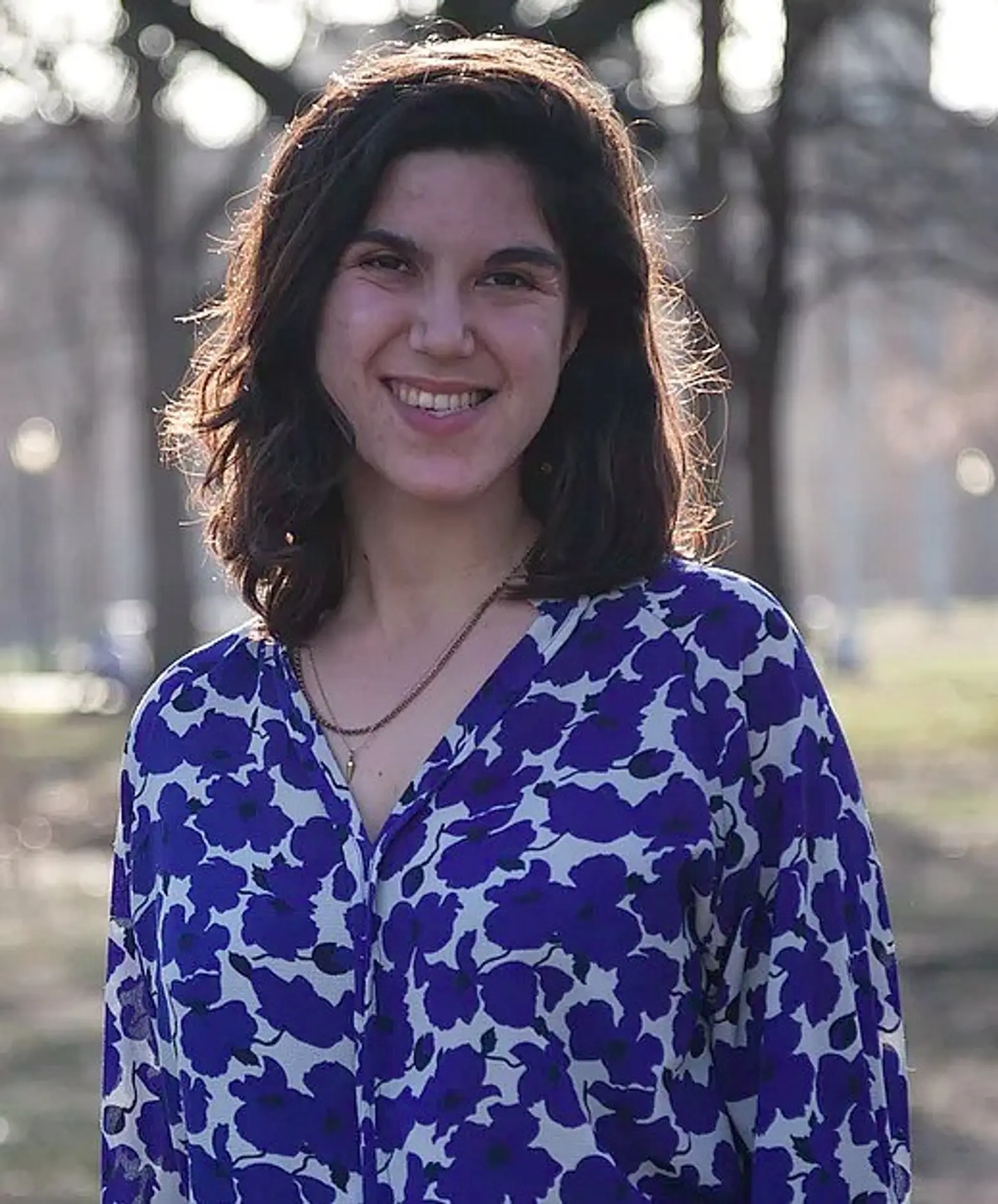 Lucie Levine is the founder of Archive on Parade, a local tour and event company that aims to take New York’s fascinating history out of the archives and into the streets. She’s a Native New Yorker, and licensed New York City tour guide, with a passion for the city’s social, political and cultural history. She has collaborated with local partners including the New York Public Library, The 92nd Street Y, The Brooklyn Brainery, The Society for the Advancement of Social Studies and Nerd Nite to offer exciting tours, lectures and community events all over town. Follow her on Twitter and Instagram.
Lucie Levine is the founder of Archive on Parade, a local tour and event company that aims to take New York’s fascinating history out of the archives and into the streets. She’s a Native New Yorker, and licensed New York City tour guide, with a passion for the city’s social, political and cultural history. She has collaborated with local partners including the New York Public Library, The 92nd Street Y, The Brooklyn Brainery, The Society for the Advancement of Social Studies and Nerd Nite to offer exciting tours, lectures and community events all over town. Follow her on Twitter and Instagram.
